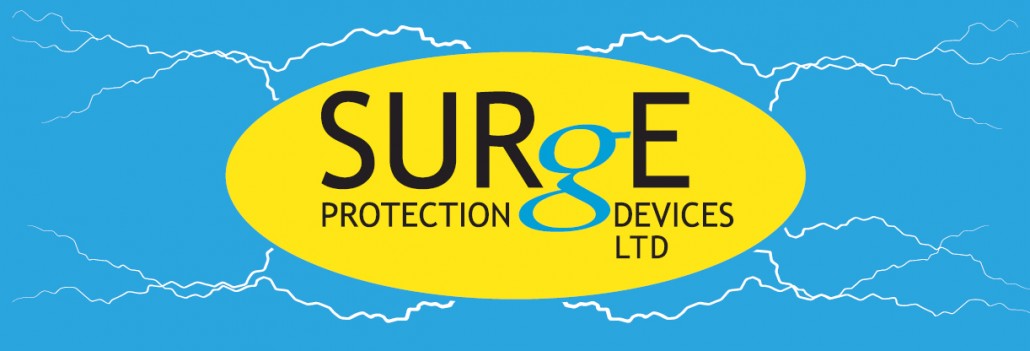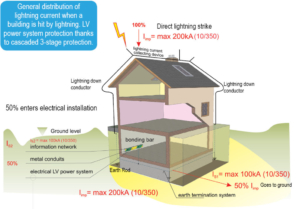Lightning Protection in Domestic installations…
Lightning Protection in Domestic installations…
Following on from my post last week about surge protection in domestic installations today I want to talk to you about lightning protection in domestic installations.
Lightning Protection only needs to be installed on a domestic installation when the property is directly fed by over head power lines, or has an external lightning protection system (LPS) on the property.
Having an external LPS on a domestic property is rare, because the LPS system is designed to protect the physical building in a lightning storm. Most domestic properties are deemed not at risk from direct lightning strikes. The LPS is usually cross-bonded to the main incoming panel, so generally when an LPS is struck by lightning, 50% of the energy goes to earth through the earth rods, then 50% of the energy comes into the building via the cross-bond. Please see the photo below.
This is the same principle with overhead power lines, except as the L&N supply come directly in to your incomer, if the overhead line is stuck by lightning the whole lightning impulse is then transferred through to the domestic electrical system.
This is why you need to install a combined lightning and surge device (Type 1+2+3) on the main panel where the LPS system is cross-bonded to, or where overhead power lines are connected to the internal electrical system.
If there are any consumer units more than 10-15 metres away from the main incoming panel then a surge device (Type 2) will need to be installed. This surge device will be taking care of all the surges generated internally to the property.
Please note that a combined lightning and surge device (Type 1+2+3) will not only protect against direct lightning strikes but also internally generated surges too.
If you have any more questions please get in touch with our specialist surge team on 01484 851 747.























